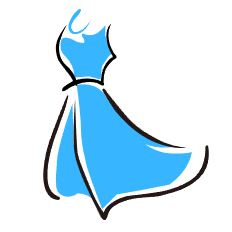For many of us, the path to healthy, shiny hair is lined with promises—shampoos that “restore,” conditioners that “nourish,” and treatments that “revive” tired strands. But in a beauty industry bursting with glossy marketing and buzzwords, what’s left unsaid is often the most crucial: not what a product does, but what it contains. Or more specifically—what it shouldn’t.
In 2025, as the clean beauty movement becomes less of a niche and more of a mainstream demand, a closer inspection of haircare labels has become not only common but necessary. While some ingredients can genuinely improve hair texture, scalp health, and overall vitality, others can undermine all of those efforts, creating a cycle of dependency, irritation, and long-term damage. This essay explores the haircare ingredients to avoid—not because of passing trends, but because science and lived experience increasingly support the case for their removal.
The Mirage of Lather: Sulfates and Their Stripping Power
There’s something undeniably satisfying about a rich, foamy lather in the shower. But behind that luxurious sensation often lies a harsh truth: sulfates, the cleansing agents responsible for that froth, can do more harm than good.
Sodium lauryl sulfate (SLS) and sodium laureth sulfate (SLES) are among the most commonly used surfactants in shampoos. While they’re effective at removing oil and dirt, they can also strip the scalp and hair of essential natural oils. For people with curly, textured, colored, or dry hair, this can be especially damaging, leading to frizz, brittleness, and scalp sensitivity.
Sulfates can also disrupt the scalp’s microbiome, which plays a crucial role in everything from oil regulation to dandruff prevention. More brands are now offering sulfate-free alternatives that cleanse just as effectively without the collateral damage.
The Slippery Slope of Silicones
Silicones are another ingredient that have divided the beauty world. Found in many conditioners and serums, they give hair a temporarily smooth, shiny finish. However, this quick fix often masks deeper issues.
Dimethicone, cyclomethicone, and other silicone compounds form a synthetic layer around the hair shaft, making it feel soft while preventing moisture from truly penetrating. Over time, this can lead to dryness and buildup, especially for people who don’t use clarifying shampoos regularly.
Worse, some silicones aren’t water-soluble, making them difficult to wash out without harsh detergents (like sulfates). It becomes a cycle: use silicones, then need sulfates to remove them, which dries out your hair, prompting you to reach for more silicones.
The solution? Look for water-soluble silicones like dimethicone copolyol—or better yet, plant-based smoothing agents such as aloe, shea butter, or coconut oil that actually nourish instead of coat.
Parabens: A Preservative with a Price
Parabens (like methylparaben, propylparaben, and butylparaben) have been widely used in cosmetics for decades to prevent the growth of mold and bacteria. But their inclusion in personal care products has sparked ongoing controversy, especially due to their potential role as endocrine disruptors.
These compounds can mimic estrogen in the body, and though studies have yet to definitively prove they cause harm in trace amounts, their presence in multiple daily-use products raises concern. The cumulative exposure is what makes them problematic.
While the debate continues, many consumers are opting for paraben-free products as a precaution. Brands have responded by using natural preservatives like potassium sorbate or phenoxyethanol, which tend to be gentler on both skin and endocrine systems.
Artificial Fragrances: The Unseen Irritant
“Fragrance” may seem like a harmless term on a label, but it often conceals a cocktail of undisclosed chemicals—some of which are known allergens or irritants.
Because companies are allowed to keep fragrance formulas proprietary, a single word can stand in for dozens of ingredients, many of which can cause scalp irritation, allergic reactions, or trigger migraines in sensitive individuals.
Natural alternatives like essential oils or plant distillates are better choices, though they, too, can be irritating in high concentrations. The key is transparency. Choose brands that specify the sources of their scents or offer fragrance-free options.
Phthalates: The Scent Enhancers That Stick Around
Often hidden within the “fragrance” umbrella, phthalates are used to make scents last longer. But like parabens, they’re suspected endocrine disruptors and have been linked to reproductive issues and developmental concerns in several animal studies.
They’re especially problematic in leave-in products—like serums, stylers, and sprays—because they remain on the scalp and hair for extended periods. While legislation in some countries has begun limiting phthalate use, they still appear in products globally.
The good news? Many conscious brands now explicitly label their products as “phthalate-free.” It’s worth seeking them out.
Drying Alcohols: Deceptively Lightweight
Alcohol in haircare isn’t inherently bad—fatty alcohols like cetyl and stearyl alcohol can be moisturizing and beneficial. But short-chain drying alcohols, such as isopropyl alcohol or ethanol, are another story.
These ingredients are often included to help products dry quickly or feel lighter. However, they can zap moisture from both hair and scalp, leading to breakage and irritation over time. For people with dry or curly hair, this is particularly risky.
Instead, look for products that use hydrating agents like glycerin, panthenol (pro-vitamin B5), or even hyaluronic acid to maintain that weightless feel without the dehydration.
Formaldehyde Releasers: The Silent Offenders
Formaldehyde is a known carcinogen, yet it’s still present—albeit often indirectly—in many hair products. That’s because certain preservatives like DMDM hydantoin, imidazolidinyl urea, and quaternium-15 release small amounts of formaldehyde over time to keep products shelf-stable.
These ingredients are especially prevalent in some keratin treatments and relaxers. Repeated exposure can lead to scalp irritation, allergic reactions, and long-term health concerns. The risk is greater for salon workers who handle these products frequently, but home users aren’t exempt.
Always check the ingredients list, and opt for formaldehyde-free hair treatments, which are becoming increasingly available.
Coal Tar Dyes: Color at a Cost
Used in some dandruff shampoos and dark hair dyes, coal tar derivatives can help reduce itching and flaking. But they come with risks. Coal tar has been classified as a potential human carcinogen and is banned or restricted in many countries.
While its anti-inflammatory properties are real, safer alternatives like salicylic acid, tea tree oil, or zinc pyrithione are now widely used. Always read labels on medicated shampoos and hair color products—especially if used frequently.
The Clean Haircare Movement: A New Standard
With growing awareness comes growing demand. The “clean beauty” movement has pushed brands to re-evaluate not just what goes into their products, but what should stay out. Consumers are no longer passive—they’re label-literate, research-driven, and quick to share insights across social media and beauty forums.
The best part? You no longer have to sacrifice results to avoid harmful ingredients. Advances in green chemistry have made it possible to create effective, sensorially pleasing haircare using safer alternatives. Brands like Innersense, Rahua, Briogeo, and Act+Acre are leading the charge, proving that clean can also mean high-performance.















Discussion about this post